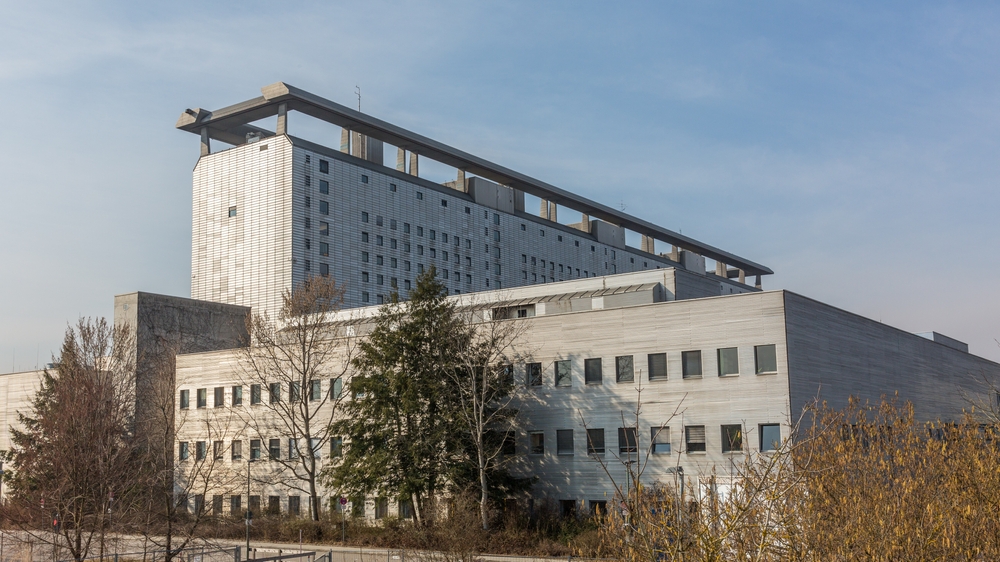In a digitally networked world, medical facilities must not only accompany technological progress, but actively shape it. Digital access control systems offer an exemplary step in this direction. They specifically address sources of danger in hospitals and thus consistently focus on the safety of patients and staff.

Security in clinics – essential for smooth daily operations
Sensitive areas in medical facilities require special security measures. Whether patient rooms, where intimacy and peace and quiet should be maintained, or archives with confidential patient files – the integrity of these places is essential. The need for a comprehensive security system in this complex environment is not only desirable, but essential.
- Authorized access: Areas such as operating theaters and intensive care and neonatal wards require the highest level of sterility and must be specially protected. Many rooms also contain medical equipment, which should be the focus of a safe hospital due to its high value and vital function. In addition, drug stores, especially those containing expensive substances or substances susceptible to abuse, must be consistently secured against unauthorized access.
- Data protection: Digitalization in clinics simplifies the handling of medical data, but poses security challenges: In addition to cyberattacks, physical access to hardware and files poses a risk. Holistic protection, both digital and physical, is therefore fundamental.
- Staff and patient safety in hospitals: Digital locking systems increase security in clinics through individual access rights and seamless monitoring. Lost means of access can be deactivated immediately. This minimizes the risk of unauthorized access and promotes a general sense of security throughout the facility.
Problems of conventional access control with keys & co.
Traditional access controls based on mechanical keys have been the norm for decades. There are a whole series of inherent risks. A lost or stolen key can cause serious security breaches and hinder access to critical areas for staff. Tracking and managing hundreds or even thousands of keys is not only resource-intensive, but also time-consuming. In addition, in the event of a security incident, the entire locking system often has to be changed, which can lead to considerable costs and business interruptions.
Modern digital locking systems offer a flexible and secure alternative that adapts to the dynamic requirements of medical facilities.

Digital access control: a future-oriented solution for your hospital
Digital access controls enable individual and flexible allocation of access rights and their seamless monitoring. If the selected identification medium such as transponders, SmartTags or a SmartCard is lost, it can be deactivated immediately, thus minimizing the security risk.
Among the outstanding advantages include:
- Automated documentation for tracking access, which also makes administration much easier.
- Guarantee of access only for authorized persons.
- Standard of hygieneThanks to non-contact technology, the risk of cross-contamination is reduced.
- Automatic loggingwhich reduces the susceptibility to errors by eliminating human error sources.
- Global access enables remote programming and monitoring, which is particularly advantageous for very large hospital chains.
Against the backdrop of increasingly complex and specialized requirements in the healthcare sector, upgrading to advanced digital solutions is becoming essential. Electronic access systems for hospitals & Co. overcome the limitations of traditional locking systems and represent a forward-looking, innovative technology for clinics and medical facilities.
A hospital that invests in digital access control is investing in the protection of its patients, its staff and its reputation.
Perfectly tailored to your clinic – the System 3060
The electronic locking system 3060 is characterized by its multifunctionality, which means that it is able to meet a variety of challenges that can arise in medical facilities. It combines state-of-the-art technology with user-friendly applications to meet the security standards of today and tomorrow. It not only offers increased security in the hospital, but also an optimized workflow for staff. Unnecessary delays caused by searching for or exchanging keys are a thing of the past.
- Access control and theft protection: These basic functions of the System 3060 ensure that only authorized persons have access to certain areas and that valuable resources are protected against theft.
- Security cabinets: Specialized cabinets protect medicines and confidential documents from unauthorized access.
- Networking: The possibility access authorizations in real time is invaluable, especially in emergency situations.
- Centralized facility management: A centralized management system makes facility management considerably easier by streamlining and optimizing organizational processes.
- Door monitoring with alarm: Door monitoring is an additional security feature that ensures that critical areas are monitored around the clock and that any unauthorized access attempt is reported immediately.

Großhadern Hospital in Munich
Digital locks at Munich University Hospital – a real success story
The University Hospital Munich with its sites in the city center and Großhadern treats several hundred thousand patients every year. In view of its immense size and the constant flow of visitors, access to the hospital poses a crucial security challenge. SimonsVoss has risen to this challenge and achieved impressive results.
As part of the project, 15,000 doors and locking cylinders were retrofitted and over 10,000 transponders were provided. This affected 28 clinics, nine institutes and six departments with a total area of 280,000 square meters, including critical areas such as intensive care units, operating theatres, laboratories, IT and server rooms as well as the building technology. To ensure safe escape routes in the event of a fire special panic locks installed. Suicide-proof locking cylinders provide additional security in sensitive areas such as psychiatric wards.
The software is controlled by the facility management via the control module. In order to ensure that all employees are familiar with the new system, continuous training courses were held during the ten-year changeover phase. This project clearly shows how technological progress, combined with careful planning and implementation, can significantly increase safety in large medical facilities.
Simple implementation of digital access controls for secure day-to-day hospital operations
The digitalization of access management is far more than just a change in technology. It is a strategic upgrade that redefines the foundations of a safe and efficient facility. The initial investment costs are quickly offset by the long-term benefits in terms of safety, comfort and resource efficiency. However, a methodical and step-by-step approach is required to ensure this seamless transition.

Step by step: your path to digital access control
1. needs analysis: Start with our detailed healthcare checklist to determine the exact needs and requirements of your facility.
2 The first contact: Contact our competent service team or find a qualified specialist retail partner in your area.
3. personal advice: an expert will guide you through all the options and work with you to create a customized offer.
4. flexible installation: start with step-by-step retrofitting – whether for external doors, medicine rooms or other specific areas. Our solutions integrate seamlessly into your existing infrastructure so that the changeover runs as smoothly as possible.
5. intensive training: Parallel to installation, we provide thorough training for the responsible personnel and facility management. Our software is designed to be user-friendly: Access authorizations can be assigned and managed with just a few clicks.
6 Rollout: After successful installation and training, the digital locking media are issued to the employees. With the right preparation, this process runs smoothly and efficiently.
Invest in improved hospital safety now!
SimonsVoss locking systems protect hospitals from numerous potential sources of danger. Are you also interested in investing in the future of hospital safety? Contact our service team here for more information or read up on the topic in more detail with our free white paper “Digital access control in healthcare” to find out more about the many ways in which you can make your hospital more secure.
